Today, I shall explain WHY I'm shooting for pictures that look like this. A picture like this is generally referred to as a "side-gait photo". The reason I like these pictures is because it says quite a bit about the dog's structure. Structure refers to the angles of the dog's joints and the way they all work together in movement, among other things. You don't need to know the finer points of this (it would take hours to explain completely and probably bore you to death) but what you do need to know is that dogs who move efficiently and have proper structure use less "fuel" and hold up longer. If a dog is constantly compensating for poor structure, sooner or later his joints will break down at the weak link. Samoyeds are sled dogs, and having a fuel efficient sled dog when you're running them hundreds of miles (and theoretically needing to either haul or hunt for their food) is a big deal.
Sledding, movement, and great structure are what sold me on Samoyeds.
I am, without a doubt, a movement girl.
In a side gait photo the average person can easily see a few major things. First, you can see the basic "reach and drive" of the dog. This very basically refers to how much ground the dog covers in the front (reach) when he stretches out his front legs and how much he extends in a push against the ground (drive) in the rear. An important thing to remember when looking at the rear is that no drive is happening if the dog's back leg is way in the air. You can have what looks like very flashy drive in the rear, but really all you have is back legs hanging up in the air and not doing a darn thing to move the dog.
Have another look at Annika. See how far forward she reaches in relation to her head and how far back her rear extends.
(and that her back leg is right down on the ground rather than floating up in the air)
(Annika will be an Aunt on the Sire's side to my new puppy)
Another important thing you can see is how balanced the movement is. A dog can way over reach and have little drive in the back to match it or he can have all kinds of drive in the rear and not enough reach in the front to combine it with. In the case of lots of drive in back and little reach in front, the front joints will get pounded by the rear with every step the dog takes - this ultimately results in breakdown of the front end. This matters regardless of what the dog does for a "living" and it is exactly why my Lilly won't be doing a lot of agility work - her front end can't handle jumping and landing like that and I don't want to see her hurt when she gets older.
Good structure also can be seen in what is called good "timing". Have a look at the two feet in the middle underneath Granite here:
(Granite will be an Aunt on the Dam's side to my new puppy)
See how they come so close they darn near touch? We certainly don't want those feet crashing into each other underneath her, but we do want them to come close together. This "stepping into the front footprints" is not only energy efficient in snow, it's also an indicator of balanced power. Proper angulation of joints (both front and back) is how balance and proper timing is achieved in dogs.
Here's a "textbook sketch" of great balance.
Here is a sketch of dogs with poor reach and balance.
Notice the distance left between the feet under the dogs as well as the poor reach in the dog to the left. Often, if the angle of the joints is wrong, the dog cannot take nice big strides like you saw Annika and Granite take above. These short strides mean that this dog will take 6 steps where Annika and Granite took 3.
More steps = more fuel consumption and more wear on joints.
More steps = more fuel consumption and more wear on joints.
Here you see nice long strides and good balance.
Here's Rico (my puppy's sire) showing of his excellent movement regardless of the shadows that make the picture less appealing.
So... while I was in Tennessee, I would have loved to get lots of pictures of movement, but low indoor lighting and fast moving dogs is not conducive to nice pictures. I did get some nice video, but I'll save that for another time. (I'm impressed if you made it through this much) I did, however, get a chance to take some pictures of Mater (my future puppy's half brother).
Mater is a beautiful boy.
When I attempted to get some side-gait shots of him, we only had a small patch of sunlight to work with so his owner started gaiting him in the shade and ran into the sun. Unfortunately, this confused my camera and while shooting in sport (continuous) mode it was unable to adjust to the sunlight. I wound up with this.
Now, since the side-gait is actually pretty nice in this picture, I didn't want to just completely toss it out. Bad exposure doesn't make his stride any less pretty. I thought the water color editing was pretty cool.
This is an example of how good side-gait can be difficult to see if the photo is taken at a less than ideal angle.
And then there's always this problem. It's probably the biggest reason I am grateful for DIGITAL photography where I can just pick out and delete the headless photos. (Mater was starting to get a little sick of this game and bouncing in his steps so it's not like I cut off his head while he was doing his best work)
And sometimes you just have to give in, be happy with the beautiful pictures you DID get, and just have fun.

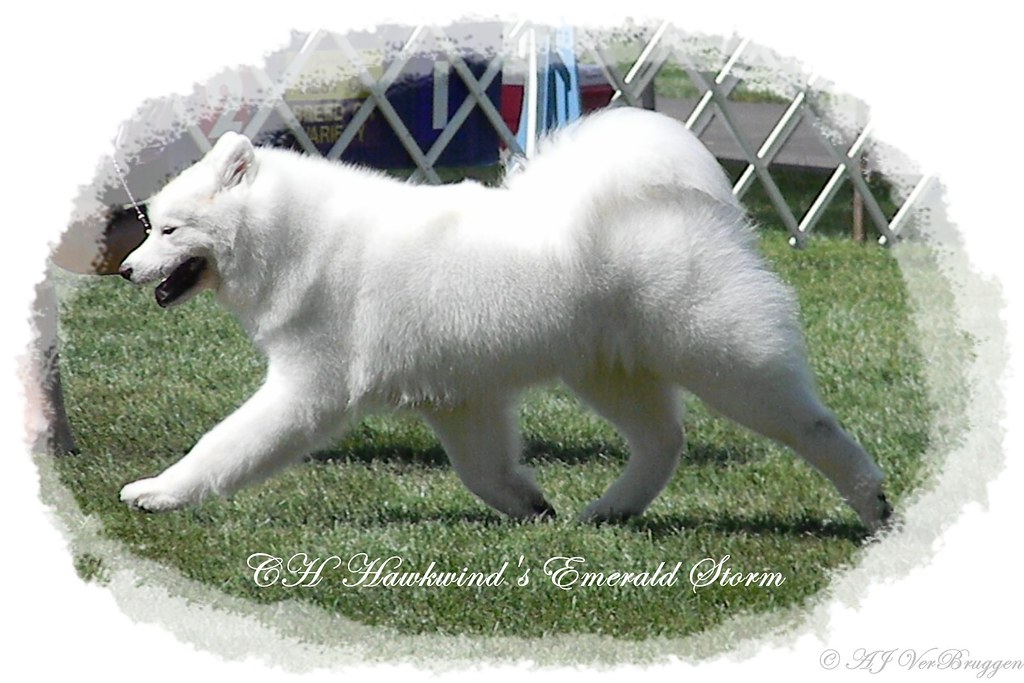
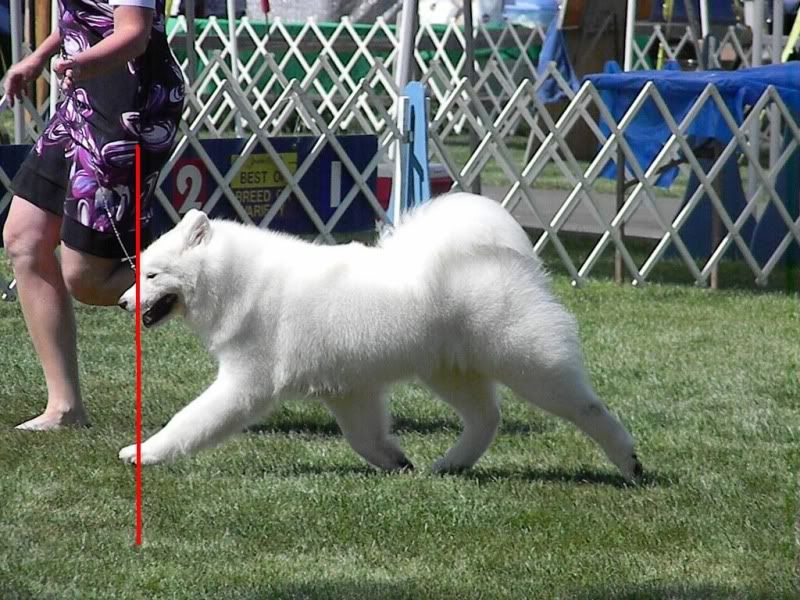
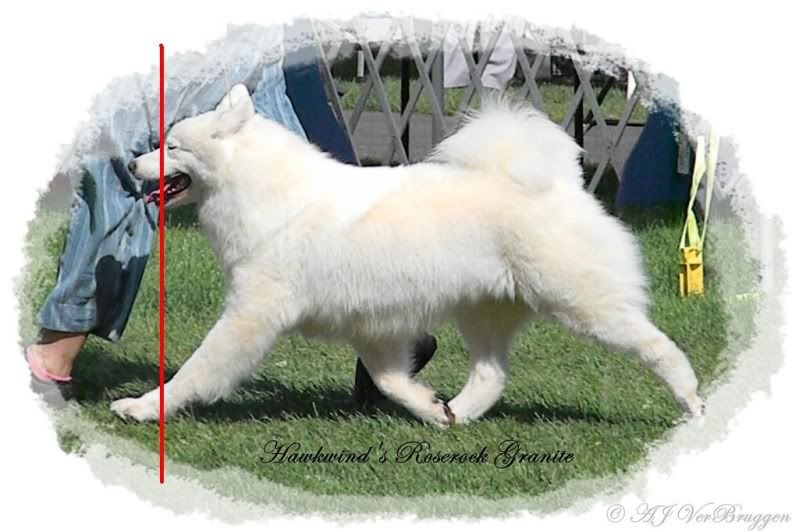





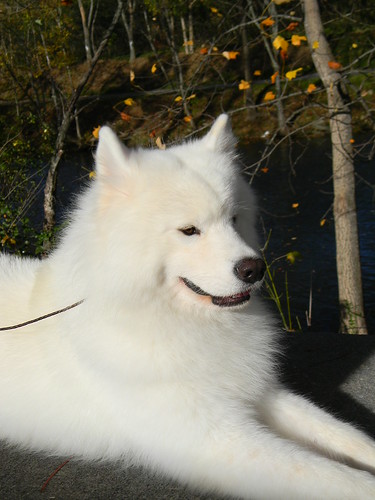
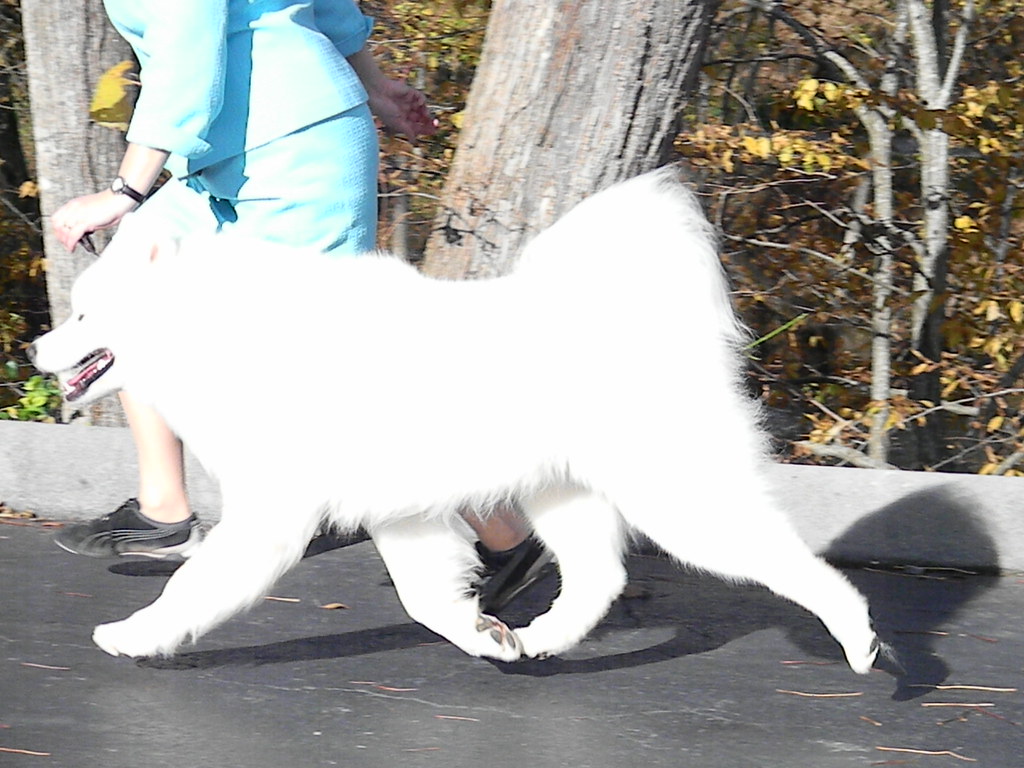
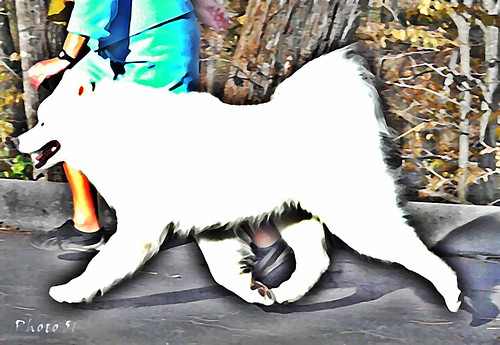

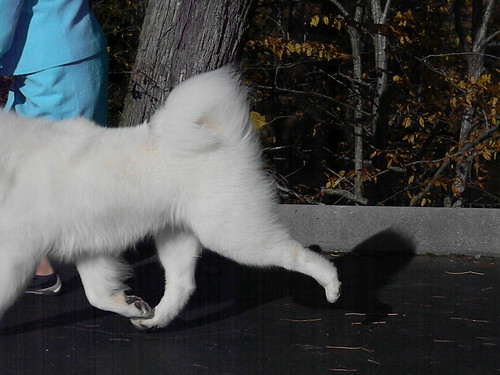

Like the color editing! I never knew that much about a dog's gait and balance. Now when I get home you are going to have me looking at my dogs to see how 'balanced' they really are. haha
ReplyDeleteIt takes a while to get an eye for it in "live action", but once you see it you can't stop looking. When I was in Minnesota for a dog show and was invited over to a friend's house for dinner I took Lilly out in the back yard to play with the other dogs. Even while they were just playing I couldn't take my eyes off them, the movement of a well built Samoyed is positively beautiful.
ReplyDeleteThe other day at the dog park there was a Weimeraner boy who moved like a dream. I don't have a clue what the breed standard calls for with them, but watching him move made me sad he was neutered - that boy had something to offer the gene pool in his movement alone. (I'm pretty sure his owner thought I was a little nuts)
Wow I have rarely come across such passsion as you have for your pups :) I own a Sammoyed as well as two Huskies and an Elkhound X Collie and I have to say she mesmerizes me with the way she moves :) Thank you for putting mechanics and info to her natural grace :) I appreciate it even more now :)
ReplyDeleteNo account available I'm afraid :)
A dog lover from Ireland